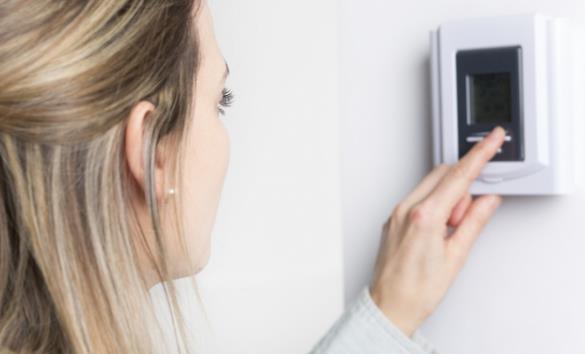Load Balancing a Space Utilizing Zone Control Sensors
 Your thermostats simply measure the air at their location and turn your AC system on and off as needed. By adding zone control sensors, you can move that air sampling location to other nearby areas and thus get a larger area of temperature sampling which is relayed to your thermostat to help control those remote areas as well. Often this is a good treatment when the following occurs:
Your thermostats simply measure the air at their location and turn your AC system on and off as needed. By adding zone control sensors, you can move that air sampling location to other nearby areas and thus get a larger area of temperature sampling which is relayed to your thermostat to help control those remote areas as well. Often this is a good treatment when the following occurs:
Example: The thermostat reads 72 degrees, however the office right down the hall is 78 degrees. Placement of a zone control sensor closer to the hot office will tell the AC system (regardless of where the thermostat is mounted) to turn on and keep THAT hot office area, cooler.
Scope of Work
- Provide all applicable labor and materials for the installation and proper placement of zone sensors to more evenly balance the cooling/heating in the space.
- Furnish and install Honeywell or equivalent brand OEM style wall-mounted zone sensors in areas affected.
- Furnish and install 4-conductor control wiring to connect each newly-mounted zone sensor to the appropriate thermostat for load balancing.
- Configure each thermostat for either averaging or zone control only depending on the needs of each of the zones.
- Start up and test for proper operation of each system with verification made by sampling of temperature at the air register and the newly-installed wall-mounted zone sensor.
- NOTE: This scope of work entails the installation of sensors to better regulate the temperature in the space and balance what the thermostats should be reading.
Inclusions
Includes all Due Diligence related work in identifying the duct system for appropriate installation of wall-mounted zone sensors and making adjustments as necessary.
Exclusions
Does not include the installation of additional ducting, in-duct booster fans, or corrections to existing ducting. An further modifications or enhancements must be quoted and approved prior to execution of the additional scope of work.
This article has been shared by Direct Service, Construction and Design to specifically accommodate our intended clientele. The intent of sharing this information is to better inform the public of these general topics, expand knowledge and safety for all and provide crucial information in regard to their MEP and building systems and/or assets. It is NOT our recommendation that any article recommendations or how-to scenarios be attempted by anyone other than a qualified or competent person.
